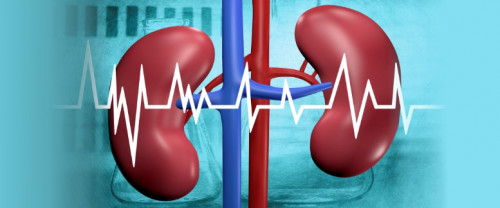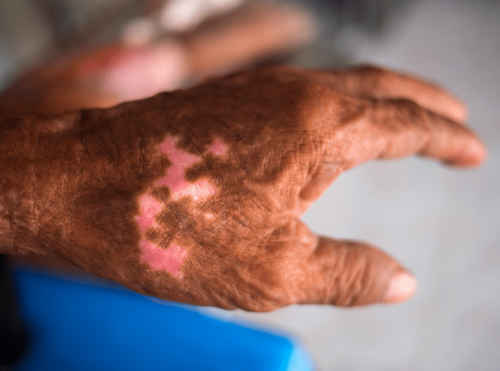The kidneys do a lot, but their most important job is to take the waste out of the blood and make urine (pee). The urinary tract takes this waste out of the body when a person pees..
Acute kidney injury (AKI) is defined as an abrupt onset of kidney dysfunction and is common in the pediatric intensive care unit (ICU). AKI is defined as the presence of markers of kidney injury (eg,albuminuria; known renal malformation) or decreased kidney function for more than 3 months.
Acute kidney injury was defined using serum creatinine (SCr) and urine output criteria, based on the Kidney Disease: Improving Global Outcomes (KDIGO) definition. AKI was classified as:
- Stage 1 (SCr rise ≥ 1.5-1.9 times baseline in 7 days or ≥26.5 µmol/L within 48 hours or urine output < 0.5 mL/kg/h for 8 hours)
- Stage 2 (SCr rise ≥ 2.0-2.9 times baseline or urine output < 0.5 mL/kg/h for 16 hours)
- Stage 3 (SCr rise ≥ 3.0 times baseline, SCr ≥ 353.6 µmol/L, dialysis treatment for AKI, or eGFR < 35 mL/min/1.73m2 [if >3 months old] or urine output < 0.3 mL/kg/h for 24 hours, or anuric for 12 hours)
The maximum AKI stage defined by SCr or urine output criteria was used to classify severity. This health problem, known as atypical progressive acute kidney disease, is mysterious because the pattern of the disease worsens rapidly and the cause is unknown.
Symptoms of mysterious acute kidney disorders in children
There are several symptoms of mysterious acute kidney disorders in children that need to be watched out for, including:
- Fever diarrhea sometimes accompanied by cough
- Runny nose or shortness of breath
- Vomiting
- Urinate less than usual
After these initial symptoms, the condition of children with acute kidney disease generally decreases immediately. If urine production decreases and kidney function decreases to 50 percent, we can see the child's body starting to swell, breathing fast and deeply, and having seizures due to electrolyte disturbances and blood pressure dropping. Most of these diseases attack children under the age of 6 years. However, there are also children under five up to the age of 8 years who are affected by this disease.
How to detect mysterious acute kidney disorders in children
If parents find symptoms of mysterious acute kidney disorders in the child above, immediately consult a doctor or the nearest hospital. If urine production is monitored to decrease or does not come out for more than six hours, immediately take the child to the hospital. The doctor will examine the child's condition and suggest supporting tests such as blood tests and urine tests to check the child's urea, creatinine, and electrolyte levels.
Assessment of kidney function can generally be known through several indicators. Currently, the most frequently used by clinicians is only creatinine from blood serum and entered into the calculation formula to get the number eGFR = estimated Glomerular Filtration Rate. In fact, the guideline for determining kidney function from journals and International Consensuses such as KDIGO 2012 Clinical Practice Guideline for the Evaluation and Management, states that several other indicators are needed in assessing kidney function, namely by measuring microalbuminuria, ACR, and urinary creatinine.
The Sinocare ACR Analyzer is one of the flagship products of Sinocare, China's largest rapid test company - POCT, and imported directly by PT Isotekindo Intertama. Is a tool to measure the Albumin Creatinine Ratio which is used practically with only 0.8 µL of urine. The Sinocare ACR Analyzer is intended to be used with the mALB / Cr kit reagent to quantitatively determine microalbuminuria, creatinine, and ACR (microalbuminuria to creatinine ratio) in a urine sample. This tool is only for in vitro diagnostic use (IVD) which is included in the category of point-of-care-test as a tool for diagnosing kidney disease or function.
The Sinocare ACR Analyzerhas several advantages including, a practical measurement process because the reagent only needs to be inserted into the instrument and then allowed to take measurements automatically for 6.8 minutes. The Sinocare ACR Analyzer will make the patient more comfortable in taking samples because there is no pain, only using urine with a small sample volume (0.8 µL). Also, the Sinocare ACR Analyzer can be placed in a small room because it does not take up much space, and the Sinocare ACR Analyzer has fairly lightweight at 6.5 kg.
If from the results of the examination there are indications of symptoms of mysterious acute kidney disorders in children, the doctor will provide treatment therapy to recommend dialysis.
References:
- Insert Pack Sinocare ACR Analyzer
- National Kidney Foundation, (2020). Acute Kidney Injury (AKI)
- Kompas Health (2022). IDAI Statement About Mysterious Acute Kidney Disorders in Children







